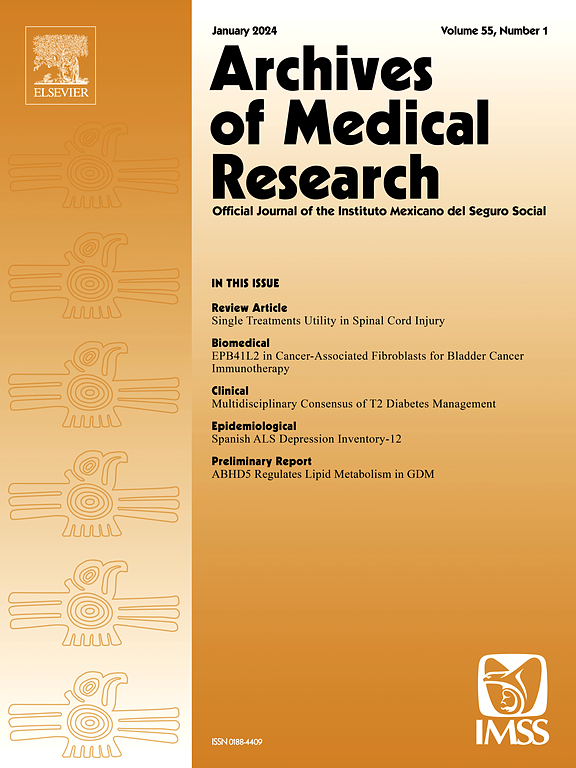控制卵巢刺激有助于卵裂期胚胎新生染色体异常的发生率。
IF 3.4
3区 医学
Q1 MEDICINE, RESEARCH & EXPERIMENTAL
引用次数: 0
摘要
背景:卵巢刺激对胚胎非整倍体率影响的研究结果相互矛盾。目的:探讨卵裂期胚胎植入前基因检测(PGT)中控制性卵巢刺激(COS)参数是否与新生染色体异常发生率相关。方法:本回顾性研究检查了浙江大学医学院妇女医院卵裂期胚胎的活组织检查数据。新生染色体异常分为:新生染色体节段异常(DCSAs)和新生全染色体异常(DWCAs)。采用多变量logistic回归模型确定可能影响胚胎基因组稳定性的因素。进一步进行分层分析,探讨这些因素对DCSAs和DWCAs的影响。结果:共1994个卵裂期活检胚胎被纳入分析。随着母亲年龄的增长,dwca的数量显著增加,而DCSAs的数量没有显著增加。不同COS方案的新发染色体异常发生率相似。较长的刺激时间与较高的DWCA率相关(p = 0.003)。随着促性腺激素剂量的增加,DCSA发生率增加。此外,与生长激素(GH)补充共同治疗与DWCAs发生率显著降低相关(p = 0.006)。结论:卵巢刺激参数与着床前胚胎新生染色体异常发生率有关。生长激素补充对减少非整倍体有有益作用,高促性腺激素剂量可能与有丝分裂错误有关。本文章由计算机程序翻译,如有差异,请以英文原文为准。
Controlled Ovarian Stimulation Contributes to the Incidence of de Novo Chromosomal Abnormalities in Cleavage-Stage Embryos
Background
Studies on the effects of ovarian stimulation on the embryo aneuploidy rate have shown conflicting results.
Objectives
To investigate whether parameters of controlled ovarian stimulation (COS) are associated with the incidence of de novo chromosomal abnormalities in cleavage-stage embryos undergoing preimplantation genetic testing (PGT).
Methods
This retrospective study examined data from biopsies of cleavage-stage embryos with one blastomere from the Women’s Hospital at Zhejiang University School of Medicine. De novo chromosomal abnormalities were classified as: de novo chromosomal segmental abnormalities (DCSAs) or de novo whole chromosomal abnormalities (DWCAs). A multivariable logistic regression model was used to identify factors that may affect the genomic stability of embryos. Further stratification analysis was performed to explore the impact of these factors on DCSAs and DWCAs.
Results
A total of 1,994 cleavage-stage biopsied embryos were included in the analysis. The number of DWCAs but not DCSAs increased significantly with maternal age. The incidence of de novo chromosomal abnormalities was similar between different COS protocols. Longer stimulation duration was associated with a considerably higher DWCA rate (p = 0.003). The DCSA rate increased with higher gonadotropin dosages. Furthermore, cotreatment with growth hormone (GH) supplementation was associated with a significantly lower incidence of DWCAs (p = 0.006).
Conclusion
Ovarian stimulation parameters are related to the incidence of de novo chromosomal abnormalities in preimplantation embryos. GH supplementation had a beneficial effect in decreasing aneuploidy, and higher gonadotropin doses may be related to mitotic errors.
求助全文
通过发布文献求助,成功后即可免费获取论文全文。
去求助
来源期刊

Archives of Medical Research
医学-医学:研究与实验
CiteScore
12.50
自引率
0.00%
发文量
84
审稿时长
28 days
期刊介绍:
Archives of Medical Research serves as a platform for publishing original peer-reviewed medical research, aiming to bridge gaps created by medical specialization. The journal covers three main categories - biomedical, clinical, and epidemiological contributions, along with review articles and preliminary communications. With an international scope, it presents the study of diseases from diverse perspectives, offering the medical community original investigations ranging from molecular biology to clinical epidemiology in a single publication.
 求助内容:
求助内容: 应助结果提醒方式:
应助结果提醒方式:


